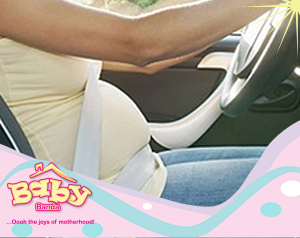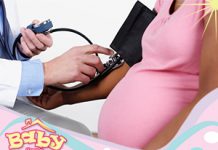THE LONG HOLIDAY DRIVE: SAFETY ON OUR ROADS
December holidays are here again. This is a time when everyone thinks about spending time with their loved ones who live away from the city especially in rural areas. It is also a time for children to visit their relatives and bond, whilst those who work in the city seek a chance to rest and have peace of mind from the busy towns. Some families visit areas designated for holidaymakers, for instance, the beach in Mombasa, game parks around the country and camping spots.
However, December marks the highest number of accidents witnessed in the country. In addition to the surveillance and control by the government, it is important for individuals to be careful and take precautions as best as they can.
Baby Banda would like to share with you some tips on safe travel when expectant and even as you travel with your child.
SAFETY OF MUM AND UNBORN BABY:
I am expectant, is it safe for me to drive?
Yes, you can drive as long as you are having a normal pregnancy and do not suffer from bouts of dizziness. In the current juggle around work and other tasks that need to be done, mums drive for convenience, either to run errands, take kids to school or even go to work. It is however important to avoid very long trips. Take regular breaks to stretch and relieve any backache especially if you are driving for more than 2-3 hours. Some common breaks that expectant women often take in longer journeys are toilet breaks or a few minutes to rub their tummy, or just have a walk for back comfort.
Should I buckle up? What should I do with the discomfort of buckling up?
Yes, you should always wear your belt to ensure both your unborn baby and yourself are very safe in case of an accident. When you buckle up correctly you should not have any discomforts. However, as your pregnancy progresses and you grow larger it becomes more difficult for you to enter and exit a car especially with the steering wheel getting in the way. At the last trimester stages, it is better to have someone drive you.
What is the correct way to buckle up while driving?
Always wear the lower side of the belt low on your hip bones and also below your belly. The shoulder part of the belt should go onto the side of your belly and across the centre part of your chest. Ensure that the belt fits snugly.
• It’s crucial that while driving, you routinely check that the shoulder-belt is not directly lying over your bump as this could increase the risk of injury to your unborn child.
• We recommend expectant women to buy a maternity seat belt for added safety.
How should I adjust my seat if I am a driver and to what position?
Adjust the seat to a position that feels comfortable for you but away from the steering. It’s advisable to sit as far back from the steering wheel, your legs will be the limit of how far you could use the peddles of the car. This will allow for space between the steering wheel and the size of your bump.
As your tummy grows you should adjust your seat further away from the steering wheel.
Should I switch off the airbags or leave them on?
Do not switch off the airbags as they offer added protection to you in case of any impact
What should I do in case of an accident?
Even if it was a “small” accident, always go to the hospital immediately to get a check-up to ensure that even this mild impact may cause premature labour.
What is a shoulder-lap belt?
This is a belt that has a strap coming down from your left or right shoulder and diagonally crossing your chest and then goes across your waist or lap.
What if I am travelling by public means, what positions and seats should I take on the bus?
Try and take a seat towards the middle of the bus near a window for ventilation
Does travel affect my swollen legs further?
Yes, it does, try and take breaks during the trip, take lots of water and if it is a long trip you can get compression stockings to help reduce the swelling. Try also removing your shoes during the trip.












